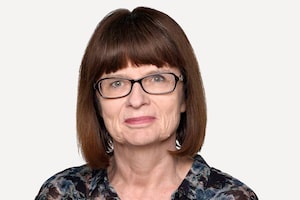Last Monday, the President of the United States used a speech to 40,000 children, teens and their adult supervisors (the Boy Scouts) to offer a lesson on the media today. His message to the students: The media is dishonest and fake. Ditto the news.
Really. That is both wrong and sad.
What readers, viewers and consumers of media need is not such hyperbolic lashing of news reporting from someone who fails to understand the job of the media. That job is not to praise or accept everything said by any political leader – that is done by their supporters, and their media promoters. The job of the media is to hold power to account on behalf of their readers: to question critically and press for answers and honesty.
Those Boy Scouts and all media consumers could use a better discussion of media literacy; at the same time, the media could do a better job of explaining what and how they themselves work.
Anyone can publish their views these days, sometimes based on facts and sometimes with zero reference to reality: Think wild conspiracy theorist Alex Jones, who has said on his site Infowars that the 2012 shooting at Sandy Hook Elementary School in Newtown, Conn., was a hoax. (He later said he was playing devil's advocate and that he tended to believe children "probably died there.")
That's an extreme example, but remember that some of these marginal platforms are built on one person's opinions, with no news reporting and no editing or checks and balances.
When you see news on social media, what is the source? Boy Scouts themselves wouldn't dream of quoting gossip or wild-eyed conspiracies in a paper for school, because they would fail. They know better, and teachers would never accept sourcing that is not original or credible. Some of those students might even be studying media literacy.
Good media coverage is critical and questioning. It involves editors, standards and policies, and a mission for accuracy and fairness. When mistakes are made, they are openly corrected. That stands in contrast to what happens in certain political quarters where errors, mistruths and lies are neither admitted nor corrected.
If you want to be more media-literate, think critically about what you read or hear. Consume a variety of sources, so that a single outlier sticks out. Don't just get your news from people republishing and retweeting: Go to the source. Is that source credible? Do they have public policies about their standards? Do they write broadly about different political views? Can you tell if it is opinion or news?
This is where the news media could do better. And I hear from Globe readers regularly who demand more clarity.
This week, two readers offered advice on that front. A recent story on a Chinese telecom company at the centre of a takeover noted that "critics say [the company's] past connection to Chinese security authorities … should have raised red flags in Ottawa." One reader wrote, "If these journalists are giving 'critics' credence, they must identify them. Maybe the critics are Canadian politicians, American right-wing hawks, friends of Putin?? I don't know, and it is deplorable practice to cite unnamed sources. Encourage them to do better …"
Calling them "critics" is really another word for "anonymous sources." It's worth a reminder that The Globe's Editorial Code of Conduct says this about unnamed sources: "We must be diligent in describing sources as fully as possible. That includes: how the anonymous sources know what they know, why they are willing to provide the information, and why we agreed to grant them anonymity."
While there has been a greater push for more descriptions of anonymous sources, more should be done to describe them. Are they political partisans or government staffers? Are they in a position to know something? How many were used in the reporting? With both anonymous sourcing and the use of the word "critics," the reporting becomes murky to the readers – they deserve to know as much as can be told about where the information came from.
Another reader noted that several Globe journalists referred to a public opinion poll of 1,521 people to demonstrate that most Canadians think the government's settlement with Omar Khadr was wrong. The initial story was very complete and included not only details about the poll but also a link to the survey.
The reader objected, though, to followup stories that didn't say how many Canadians were polled, but merely noted that "most," or 71 per cent of Canadians opposed the deal. Her point: Were you just to read one of the later stories, you wouldn't know the key detail of how many Canadians were surveyed. She thought the number of those polled was small, called it "partial reporting," and didn't believe it reflected the truth.
I, on the other hand, believe the number polled was enough and that it was a representative sampling of Canadians. Nonetheless, it is a critical piece of information for the reader to know. From those factual details, people will make up their own minds; but, especially these days, they want more facts.
Other readers are at times confused about whether an article is news or opinion. While opinion is marked with a photo of the writer, a writing style that develops an argument and is marked opinion, is that enough?
The respect for real news, not fake media, is a two-way street. While most readers know that the charges of "fake news" are themselves fake and a cover for news people don't like, media groups like this one need to include the readers more in their process, showing more of the background, explaining the how and why news is covered, and repeating the key building blocks of facts.
 Sylvia Stead
Sylvia Stead